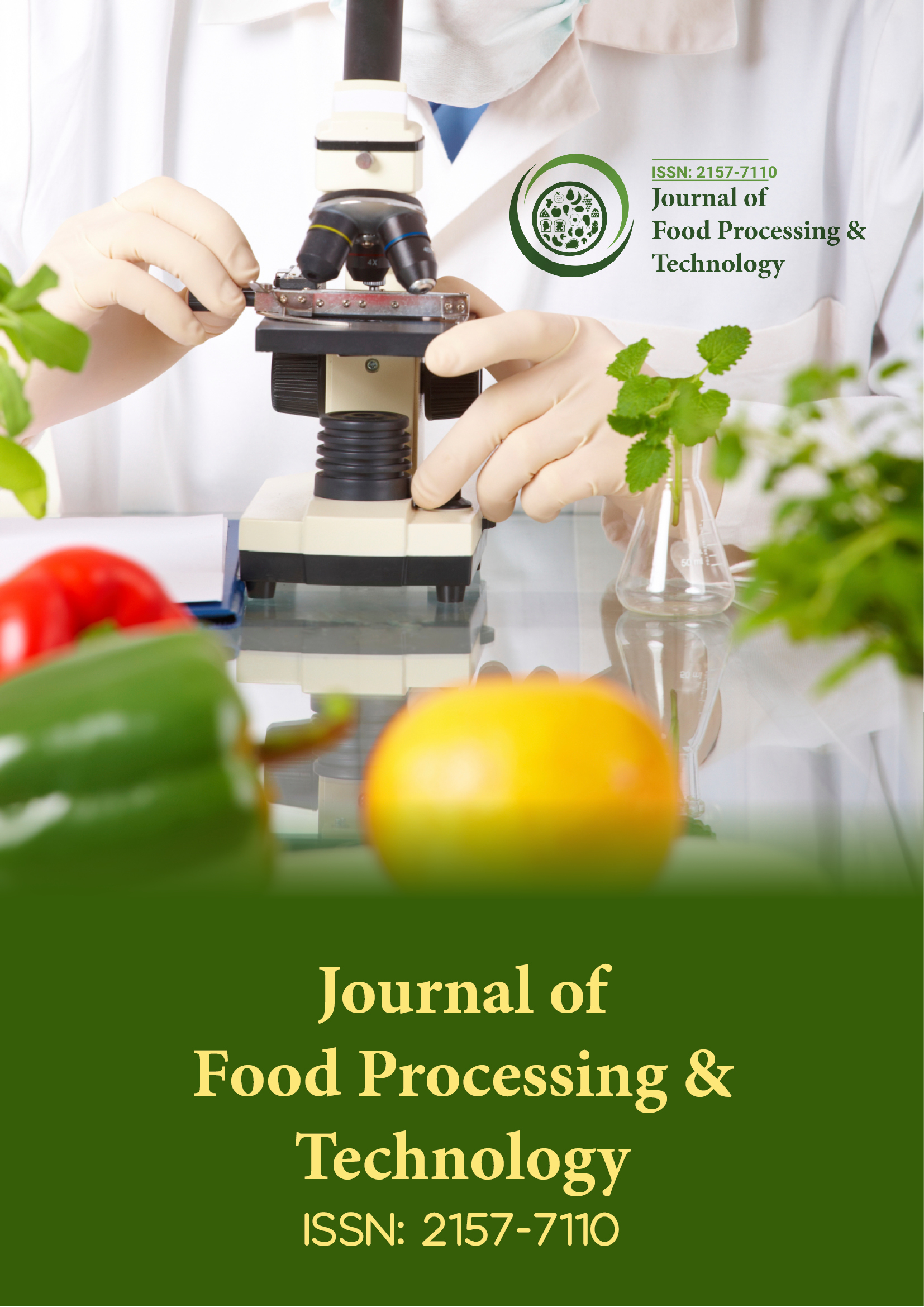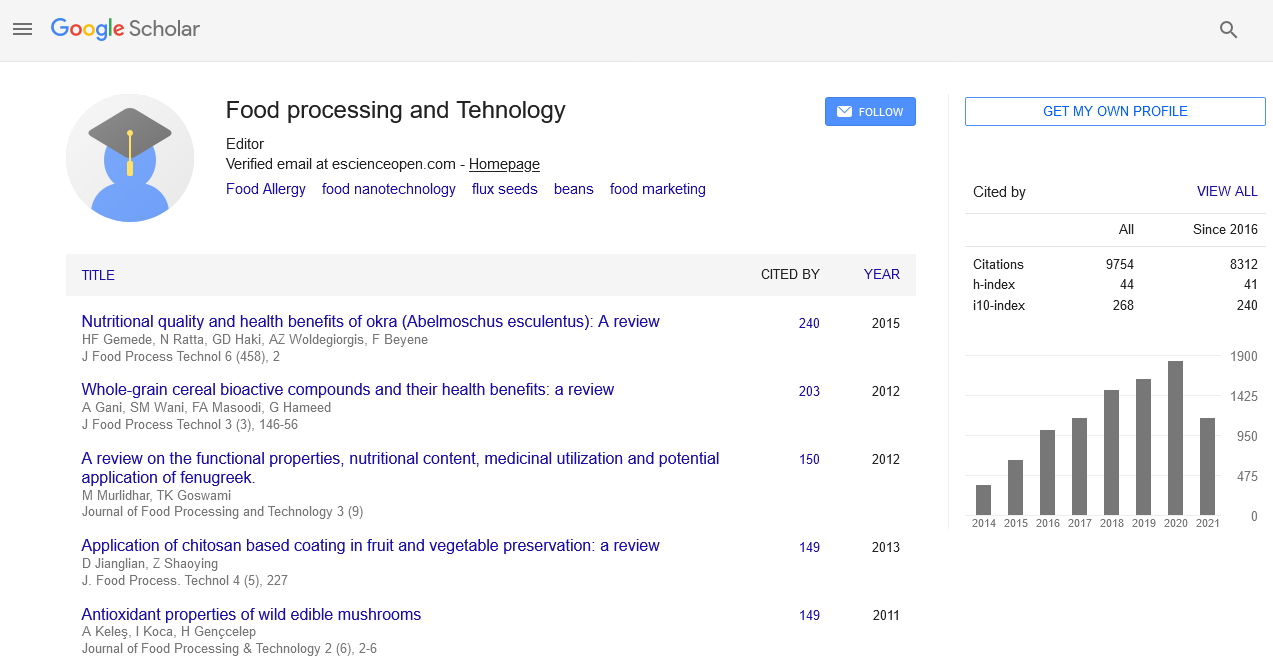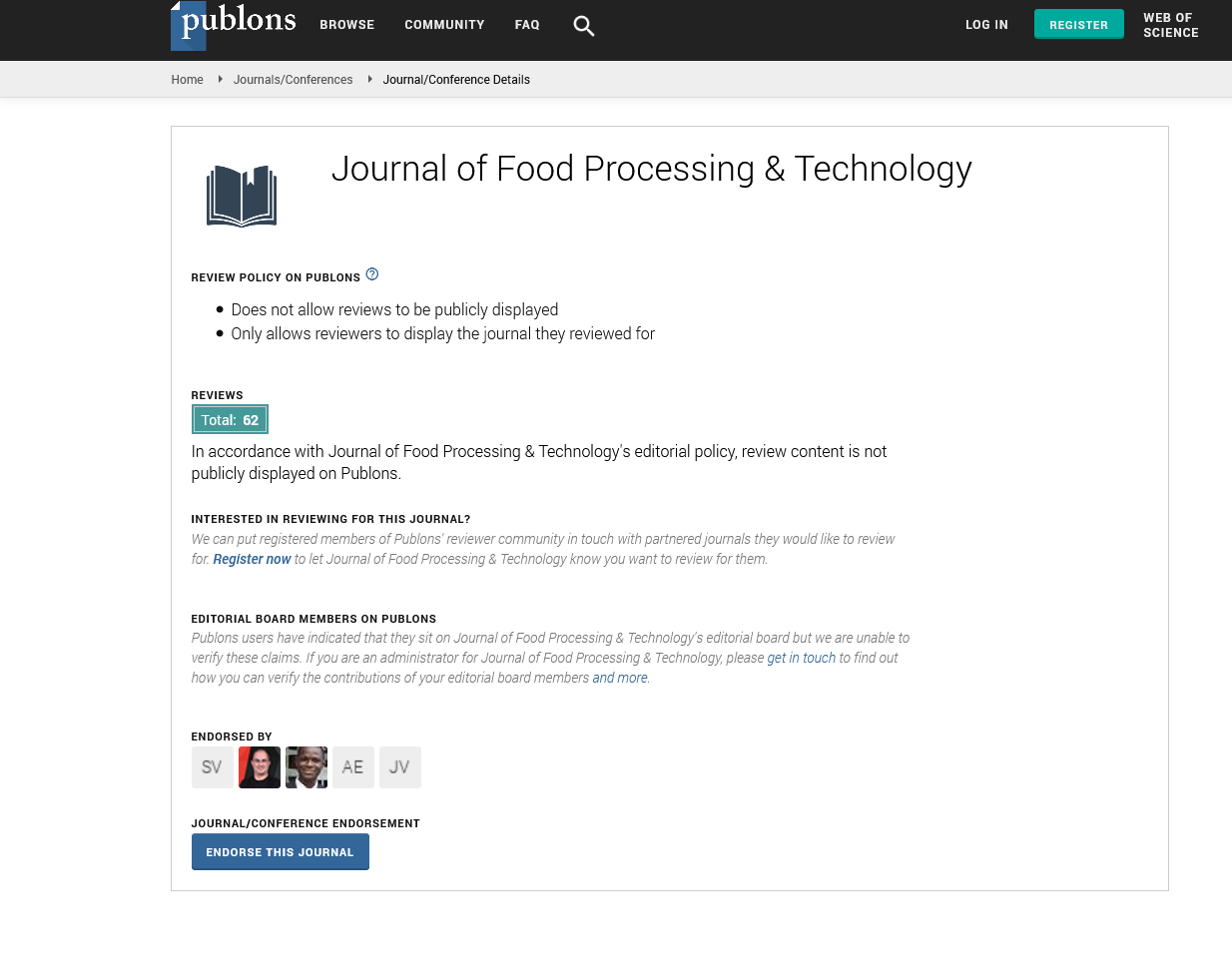Indexed In
- Genamics JournalSeek
- Academic Keys
- JournalTOCs
- China National Knowledge Infrastructure (CNKI)
- Access to Global Online Research in Agriculture (AGORA)
- Centre for Agriculture and Biosciences International (CABI)
- RefSeek
- Directory of Research Journal Indexing (DRJI)
- Hamdard University
- EBSCO A-Z
- OCLC- WorldCat
- Scholarsteer
- SWB online catalog
- Publons
- Euro Pub
- Google Scholar
Useful Links
Share This Page
Journal Flyer

Open Access Journals
- Agri and Aquaculture
- Biochemistry
- Bioinformatics & Systems Biology
- Business & Management
- Chemistry
- Clinical Sciences
- Engineering
- Food & Nutrition
- General Science
- Genetics & Molecular Biology
- Immunology & Microbiology
- Medical Sciences
- Neuroscience & Psychology
- Nursing & Health Care
- Pharmaceutical Sciences
Commentary - (2024) Volume 15, Issue 6
Advancing the Food Industry: The Integration of Detection Technologies and Machine Learning for Improved Efficiency and Sustainability
Johan Grazia*Received: 29-Nov-2024, Manuscript No. JFPT-24-28118; Editor assigned: 02-Dec-2024, Pre QC No. JFPT-24-28118 (PQ); Reviewed: 16-Dec-2024, QC No. JFPT-24-28118; Revised: 23-Dec-2024, Manuscript No. JFPT-24-28118 (R); Published: 30-Dec-2024, DOI: 10.35248/2157-7110.24.15.1134
Description
Detection technologies and machine learning are transforming the food industry, introducing new methods to improve safety, quality and efficiency. These advancements address some of the most persistent challenges in food production and supply chains, offering innovative solutions to enhance global food security and sustainability. Their applications span from agricultural practices to consumer safety, creating a comprehensive approach to addressing the complexities of the food system. Detection technologies play a critical role in identifying contaminants, ensuring freshness and monitoring production processes. In agricultural practices, these tools help monitor soil health, detect pests and assess crop conditions. Sensors, for instance, can measure moisture levels, nutrient content and temperature, enabling precise interventions to optimize yield and reduce waste. Additionally, these technologies can identify diseases in plants at an early stage, preventing widespread damage and ensuring healthier harvests.
Food processing and packaging, detection technologies ensure compliance with quality standards. Optical sensors and imaging techniques can identify physical contaminants like metal or plastic in processed foods, ensuring that products meet safety requirements. Meanwhile, advanced chemical detectors can analyze food for harmful substances, such as allergens, pesticides, or pathogens. These capabilities are vital for maintaining public trust in food safety and preventing health risks. Machine learning, a subset of artificial intelligence, complements detection technologies by analyzing vast amounts of data to provide actionable insights. In agriculture, machine learning models predict weather patterns, optimize planting schedules and determine the best use of resources such as water and fertilizer. By analyzing historical and real-time data, these models help farmers make informed decisions, enhancing productivity while minimizing environmental impact.
Supply chain management is another area where machine learning has significant applications. Food supply chains are often complex, involving multiple stages from production to distribution. Machine learning algorithms can analyze data across these stages to identify inefficiencies, predict demand and reduce losses. For instance, predictive models can optimize inventory levels to ensure that perishable items reach consumers before they spoil, reducing food waste and improving profitability. In food safety, machine learning algorithms analyze data from detection technologies to identify patterns and anomalies. For example, they can process data from sensors monitoring storage conditions, such as temperature and humidity, to ensure that food is stored under optimal conditions. If deviations occur, these algorithms can trigger alerts, allowing for timely corrective actions. Similarly, machine learning is used to analyze genetic data from pathogens, enabling rapid identification of contamination sources during outbreaks.
Consumer behavior and preferences also benefit from the integration of machine learning. Analyzing data from social media, e-commerce platforms and other sources allows businesses to identify trends and tailor their offerings to meet consumer demands. Personalized recommendations, based on dietary preferences or purchase history, enhance customer experiences while driving sales. Sustainability is another area where these technologies demonstrate significant potential. By optimizing resource use and reducing waste, detection technologies and machine learning contribute to more sustainable food systems. For example, precision agriculture minimizes the use of water, fertilizers and pesticides, reducing environmental impact while maintaining high productivity. Similarly, optimizing supply chains ensures that resources are used efficiently, reducing greenhouse gas emissions associated with transportation and storage.
Food authenticity is another critical aspect addressed by these advancements. Adulteration and mislabeling are significant concerns in the global food market, impacting consumer trust and health. Detection technologies can identify discrepancies in food composition, ensuring that products meet their advertised claims. For example, spectroscopic techniques can analyze the molecular composition of food to detect adulterants or verify authenticity. Machine learning algorithms enhance these processes by analyzing large datasets to identify subtle inconsistencies, providing an additional layer of assurance. Regulatory frameworks must also evolve to keep pace with technological advancements. Ensuring the ethical use of data and maintaining consumer privacy are critical considerations as machine learning becomes more prevalent. Transparent practices and clear guidelines will help build trust and encourage the responsible adoption of these technologies. The future of detection technologies and machine learning in the food industry holds immense potential. Continued research and development will lead to more complex tools and applications, further improving food safety, quality and sustainability. By integrating these technologies into every stage of the food system, stakeholders can address current challenges and prepare for future demands. The combination of detection technologies and machine learning represents a transformative force in the food industry. These tools enable smarter decision-making, enhance safety and quality and promote sustainability. While challenges remain, their potential to create a more efficient and secure food system is undeniable. As these technologies continue to evolve, they will play an increasingly important role in shaping the future of food.
Citation: Grazia J (2024). Advancing the Food Industry: The Integration of Detection Technologies and Machine Learning for Improved Efficiency and Sustainability. J Food Process Technol. 15:1134.
Copyright: 2024 Grazia J. This is an open-access article distributed under the terms of the Creative Commons Attribution License, which permits unrestricted use, distribution, and reproduction in any medium, provided the original author and source are credited.


